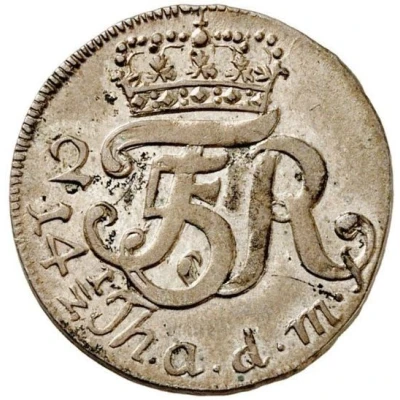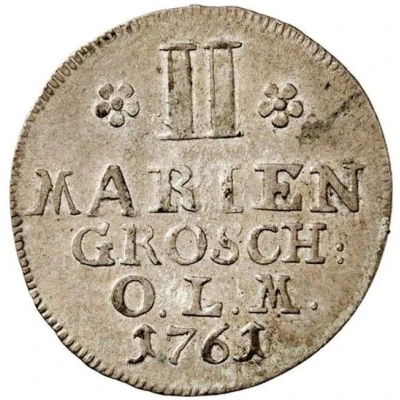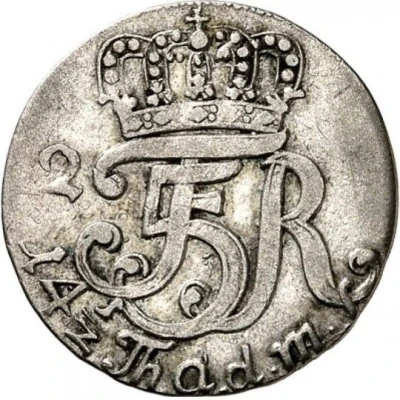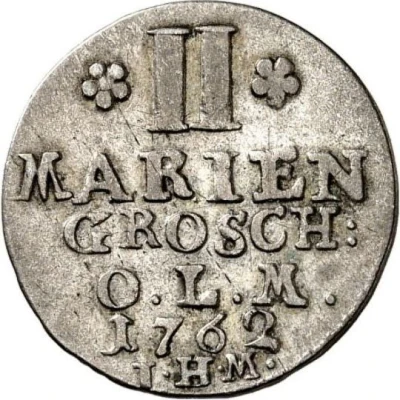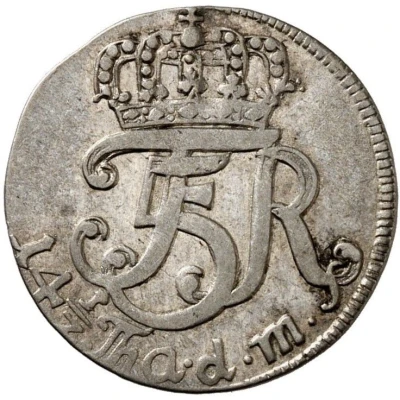
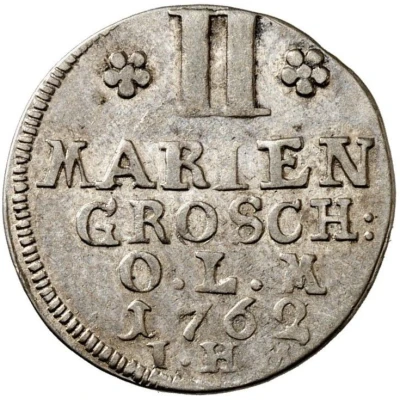

© Fritz Rudolf Künker GmbH & Co. KG, Osnabrück and Lübke & Wiedemann KG, Leonberg
2 Mariengroschen - Frederick V
| Billon (.375 silver) | 2.39 g | - |
| Issuer | County of Oldenburg (German States) |
|---|---|
| Count | Frederick V (Friedrich V) (1746-1766) |
| Type | Standard circulation coin |
| Years | 1762-1763 |
| Value | 2 Mariengroschen (1⁄18) |
| Currency | Thaler (1535-1773) |
| Composition | Billon (.375 silver) |
| Weight | 2.39 g |
| Shape | Round (irregular) |
| Demonetized | Yes |
| Updated | 2024-10-05 |
| Numista | N#341045 |
|---|---|
| Rarity index | 97% |
Reverse
Four line value inscription, date and initials below.
Script: Latin
Lettering:
*II*
MARIEN
GROSCH:
O.L.M.
1762
I.H.M.
Comment
Mintmaster in Oldenburg was Johan Henrik Madelung hence the mark I.H.MInteresting fact
One interesting fact about the 2 Mariengroschen coin from the County of Oldenburg is that it was minted during a time of great economic and political change in Europe. The coin was issued in the mid-18th century, a period marked by the rise of industrialization, trade, and colonial expansion. The coin's minting was likely a response to the growing need for currency in the region, as the economy expanded and more people began to participate in trade and commerce. Additionally, the fact that the coin was made of Billon, a silver-copper alloy, is also interesting. Billon was a common material used in coinage during this time period, as it was less expensive than pure silver but still had some of the same properties that made silver coins valuable, such as durability and resistance to corrosion. The use of Billon in the 2 Mariengroschen coin reflects the efforts of the Oldenburg government to create a currency that was both practical and affordable for the people of the region.
